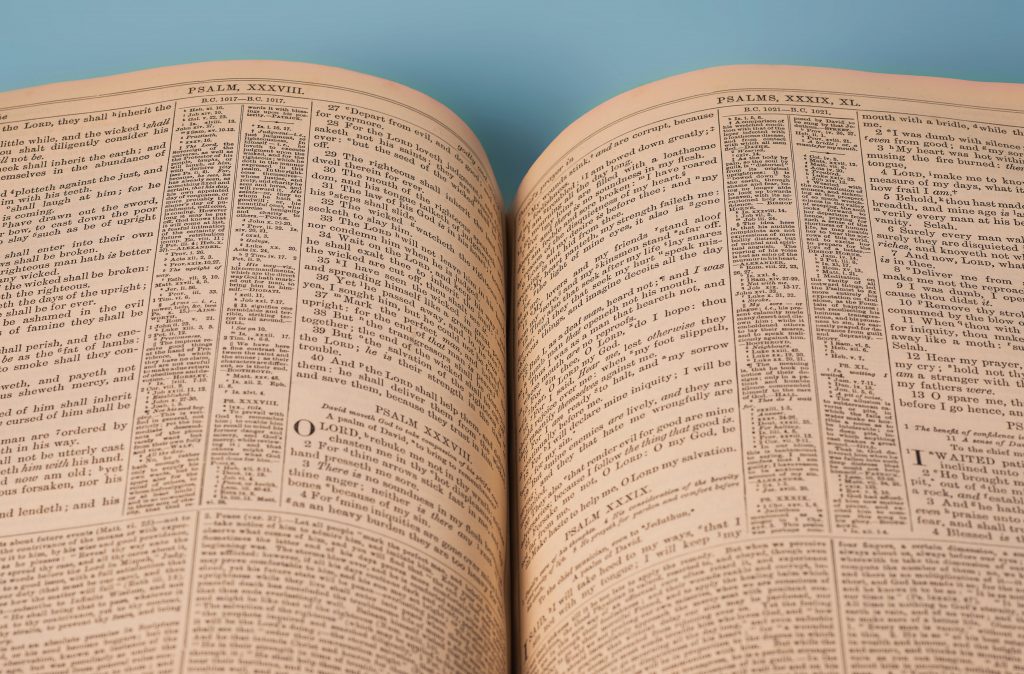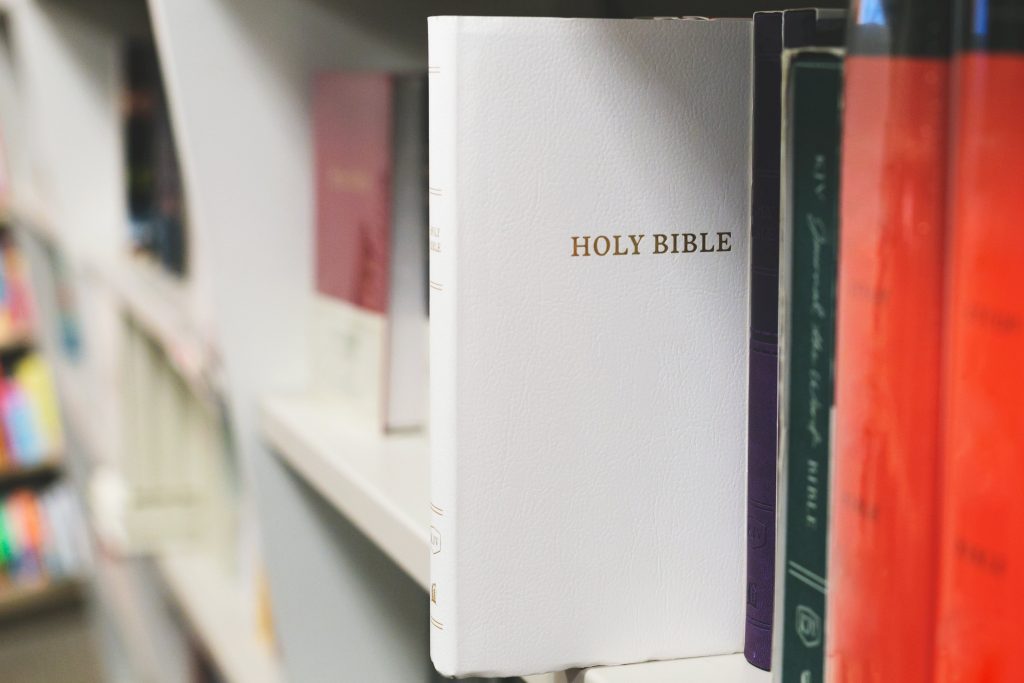This article marks the second in a series of posts that will, over the next several months, dive into the exciting — yet at times overwhelming — world of English Bible translations.
English Bible Translation at the Time of the Reformation
The problem, as Wycliffe saw it, was that while Latin may have been the common language of the people in previous generations, that was no longer the case. Coupled with this was Wycliffe’s firm conviction that Word of God (and not the Pope) reigned supreme as the final authority in the church. But how could God’s Word hold its rightful place of authority in the life of the English-speaking Christian if all they had access to was a Latin Bible they could not understand? Wycliffe’s solution was simple yet paradigmatic! He got to work on an English translation, using Jerome’s Vulgate as his base.
While the Roman Catholic Church decried Wycliffe as a heretic, the reality was that a major step forward had been taken in the church’s approach to Bible translation. While much refining work still needed to be done, Wycliffe’s labours proved that an English Bible was at least possible. That an even better English Bible, based on the earlier and more accurate Hebrew and Greek manuscripts rather than the Latin Vulgate could be produced, would have to wait another century until William Tyndale.
An Oxford University trained linguist, William Tyndale (1494-1536) had early on embraced the principles of the Protestant Reformation that had been sweeping across England in his day. Tyndale’s passionate pursuit was the translation of the Scriptures into English out of the original languages. This pursuit led to the Roman Catholic persecution of Tyndale as a heretic, and his subsequent exile on the continent. William Tyndale kept up his work, however, and by 1526, copies of his New Testament were being smuggled into England. Even the Roman Catholic book burnings of Tyndale’s New Testament could not stifle the hunger of the masses for a dependable copy of God’s Word in their own language. In fact, Roman Catholic antagonism (in this as in other areas) served more to propel the Reformation forward than anything else.
Thus, the stage was set for a flooding of English Bible translations into an England that had for nearly a thousand years been held in the grip of a Latinized Christianity in the form of both the Vulgate and the Mass. And flood into England they did. By 1535, Miles Coverdale, who had formerly worked with Tyndale while in exile on the continent, published the very first complete Bible in modern English. Coverdale’s Bible was then followed by Matthew’s Bible in 1537. Translated by John Rogers, whose pen name was “Matthew”, this version held much in common with its predecessor. Like Coverdale, Rogers had also been an associate of Tyndale. And also like Coverdale, Rogers’ translation received the king’s sanction.
While the flood of new English Bible translations continued to pour into England, two notable shifts took place in 1539 with the appearance of the Great Bible. Up to this point, translations of the Bible into English had generally been done by sole individuals, the possible exception being the Wycliffite translation, which was the fruit of the labours of Wycliffe’s followers, known as “Lollards”. Nevertheless, the Great Bible was a truly collaborative effort on the part of a translating committee. The reason for its name (Great Bible) was due to its massive size and weight. The second shift the Great Bible signalled was due to its designation as the official Bible of the Church of England (Ryken, 24-25).
Thus, by 1539 the Reforming Protestant church of English-speaking stock was able to lay claim to a growing tradition of Bible translation work. This tradition had now resulted in the first committee-produced, ecclesiastically-sanctioned Bible. A hunger for the Bible in English on the part of the people had not only given rise to this tradition, but was carrying it forward.
The growing English Bible translation work, however, finally met its match in the Roman Catholic Mary Tudor (“Bloody Mary”), who ascended the throne in 1553 and began an aggressive attempt to reverse the gains of the Reformation. As far as Mary was concerned, the whole English Bible project was nonsense and needed to be stopped. It was high time, said Mary, for the Latin Vulgate, to reoccupy its rightful place as the official Bible of the Christian Church. The Bible was no longer read in English during worship services and all English Bibles were removed from the churches and burned.
Mary’s counter-reforms forced many English Protestant scholars over to the continent for refuge. A significant base of exile was Geneva, Switzerland. The safety afforded to these scholars dwelling in Calvin’s Geneva enabled them to continue the work of English Bible translation. The result was the publication of the Geneva Bible in 1560 — the first English Bible to include numbered verses. It’s marginal notes were clearly of a Calvinistic bent. It would become the Bible carried over to the New World by the Pilgrim fathers, not to mention that used by such men as John Bunyan and William Shakespeare.
The Calvinistic and Puritanic flavour of the Geneva Bible, however, was not relished by all Protestants. Its marginal notes — in particular, those touching upon the relation between Church and State — occasionally rubbed up hard against royalty, leading to yet another English Bible translation project. In 1604, King James VI of Scotland (I of England) desired a new English translation to supplant, not only the Geneva Bible, but all other English versions that were then in circulation. Along with the king’s dislike of the Geneva Bible, he had concluded that the proliferation of English versions over the past century had served to divide rather than unite the English-speaking church (Metzger, 70). The result was the Authorized (King James) Version of 1611.
Says Leland Ryken: “The significance of the King James Bible [was] not its innovations but its synthesis of all that was best in the preceding tradition” (Ryken, 26). In other words, the translators never deemed their task as one of starting from scratch. Rather, they truly recognized that they stood on the shoulders of giants, and sought to keep what was best from the past and improve what they could. In their own words: “We never thought from the beginning, that we should need to make a new Translation, nor yet to make of a bad one a good one … but to make a good one better, or out of many good ones, one principal good one … that hath been our endeavor, that our mark” (Translators to the Reader). The Authorized (King James) Version quickly took its place as the new Bible of the English-speaking church — a title it would lay claim to for the next three centuries.
By Pastor Dan (November 2020)
Leland Ryken, The ESV and the English Bible Legacy (Wheaton, IL: Crossway, 2011).
Bruce Metzger, The Bible in Translation (Grand Rapids: Baker Academic, 2001).


